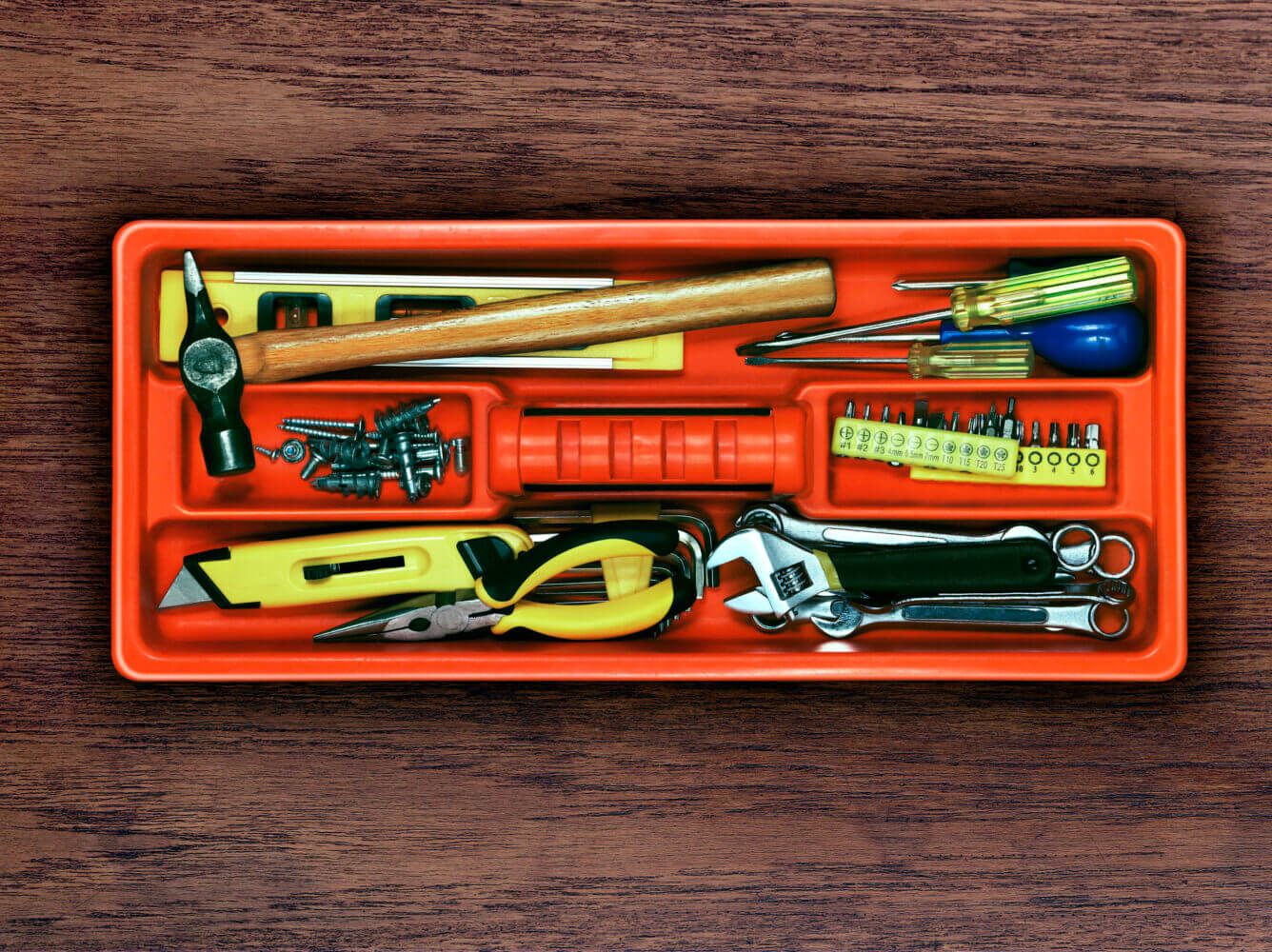
Whether you’re a new or seasoned investor, it’s always important to revisit the tools in your financial toolkit.
Building Your Financial Toolkit
Hi, I’m Jan Holman, Director of Advisor Education for Thornburg Investment Management. And I’m here with you today to talk about something that’s important building your financial tool kit Now, obviously, I’m using toolkit as a metaphor for your financial life and why this tool kit makes sense. Well, it’s summertime, and if you’re like me, a person is from Minnesota, you know that they’re six months out of the year when you can’t do any home repairs because it’s 40 below zero outside.
So here are the things that can help you put your finances into shape. Maya Angelu, said This life is not measured by the number of breaths we take, but by the moments that take our breath away. And there’s something important that’s overarching with everything you do in your financial life, everything you do in your life. And that is your values.
These photographs are of my grandchildren. And actually, as I speak right now, there’s one that’s going to be with us within about a week Values drive all the decisions you make. They actually drive all of your investment decisions. And that’s a great place to start. We, in fact, have an exercise that you can go through where you look at a list of values.
You identify the top 15 that make sense to you and feel like it’s what you believe. You reduce that list to five, then to three, then to one. So you know what’s most important in your life. Now, the reason I have photos of my grandchildren here is because that’s an indication that values change as you age. My values didn’t include them years ago because I didn’t know them, but now they are part of the most important value I have, which is my family.
Your beliefs become your thoughts. Your thoughts become your words, your words. Become your action. Your actions become your habits. Your habits become your values. And your values become your destiny. Gandhi building a tool kit is a lifelong activity. Well, let’s be realistic. If you are going to put together a workshop, you probably begin with basic tools, not anything really expensive, but basic tools, things that were functional.
But as time goes by, and the more you use those tools, the more likely you will be perfecting your skills, and the more likely you will be to increase the number of tools you have. And also the quality of the tools. That’s the reason an individual who’s been a woodworker for decades has the best woodworking tools instead of some that they could have bought at the neighborhood hardware store.
Let’s talk about the basics. Learn to think for yourself. Unless, of course, you can identify someone else with better judgment and a flashlight. The flashlight is a metaphor for financial advisor financial advisors light the way for us. They get rid of all of the noise and all of the opportunities and help illuminate the options that make the most sense for us.
They also enable us to see things clearly like during market downturns. Financial advisors help us stay invested. It’s the most difficult part of investing. They narrow our choices from many to few and they’re there for our darkest times. I know many instances where financial advisors become part of their client’s family. They’re invited to weddings and funerals, and they’re thought of as someone who has been with them for years and has helped the family make great decisions.
The challenge we have as investors is indicated on this slide. Essentially, we’re trying to balance today’s financial demands with tomorrow’s financial needs. And it’s very difficult, especially because today you have to make decisions quickly and right away. And tomorrow feels like it’s way off in the future to achieve great things. Two things are needed. A plan and not quite enough time.
Leonard Bernstein our plans are our goals. We first have to determine our values from our values come our goals and then our goals. Are more detailed and more specific. They’re linked to our values. They’re time bound. We either have goals that are short term, which would be less than three years. Medium term, three to five years or long term, which is more than five years.
The number of years to our goals will in fact affect the types of investments we’re looking at, like tape a cash reserve helps you keep things together. Cash reserve is fundamental. You’ve probably read articles about people in America only have $400 for emergencies. Cash reserves are dollars you have available for emergencies. It’s a rule of thumb, especially in the certified financial planning community, that each of us needs to have six to nine months of cash available that represent our monthly expenses and that we can access that cash at a moment’s notice.
And that when we use that cash we replenish it as quickly as we can. So that’s the tape that holds everything together. Inflation hasn’t ruined everything. A dime can still be used as a screwdriver, while in times when inflation is really roaring like now, sometimes it doesn’t feel great to buy a screwdriver. But in this case, screwdrivers are very very, very critical parts of your financial plan.
And I think of the screwdriver as insurance. It’s the thing that puts everything into place, locks it down. Kinds of insurance. You have to look at short term disability long term disability, excess disability, excess disability comes into play. For example, if you receive a bonus from your employer, Because typically long term disability covers about 65% of your salary, which does not include your bonus So excess disability is important.
Life insurance. A lot of millennials don’t believe in or think they need life insurance. The fact of the matter is people have to make a conscious decision about whether or not life insurance is something that should be part of their plan. If you have children, life insurance becomes more important. How can you create an estate if something happens to you or your spouse to replicate the income that was coming from the person that was lost?
Pet insurance is another kind of insurance that you need to think about. Unfortunately, animals aren’t cheap. I have two dogs, and whenever I go to the vet with them, it’s at least $400. That’s a lot of money. That’s like human medical care. But it’s a fact. And long term care insurance is really critical. When I was an adviser, we’d have clients who came in and we’d say to them, What are you going to do in the event that one of you in a traditional couple gets sick?
Who’s going to take care of you? And typically they would say, Well, the other person in that relationship will take care of the one who got sick. But if there’s only one person left who will take care of you? Well, it’s most often my daughter and if there’s no daughter, then it’s my daughter in law. And you know what?
The daughter in law never got the memo on that. And by the way, all women do not have the caregiving gene. So making conscious decisions about long term care insurance, whether or not there is coverage for that in terms of the amount of money someone has amassed, this is the type of thing that a financial advisor helps people decide.
Let’s talk about the hammers in a great financial slash investment plan time and compounding the great rules of investing. It doesn’t take much money to compound a tidy sum if you have time for it to grow. This was said by the great financial planning expert Venita Van Castle. This slide is an example of how time really makes a difference.
If you invested $10,000 at 6% if you left it invested for ten years, it would grow to almost $18,000. But look what happens if you leave something invested for 30 or 40 years and it’s growing at 6%. It really makes a difference. And oh, by the way, time is on your side is a Rolling Stones song. But that’s not what I’m talking about here.
Compound interest is the eighth wonder of the world. Person who understands it earns it. The person who doesn’t pays it. Albert Einstein. Now there’s a guy who had some smarts. Let’s talk about compounding and what it means. Let’s say you needed a certain amount of money. That amount of money is at the top. On the top line of that chart.
You see is there are 200, 300, $500,000 or $1,000,000. If you look down the side, different ages. What age are you now? How many years tell you need the money? It could be for retirement. How many months would that be? So what this chart is telling you is that how much per month would you have to put away?
Growing at 6%. To wind up with that pool of money, for example, if you’re 25 years old now and you have 40 years to retirement, that’s 480 months. If you put away $102 a month and that grew at 6%, you would have $200,000 in 40 years. Now, what’s important here is that time obviously works for the investor and that the compounding takes place and compounding simply is your money’s earning money.
And then the next time that you get an earning on that money, the payment is being made on the money plus the money you earn. And that money grows with every time you earn money and it’s added to the pool. The rule of 72 is an interesting concept. Many of us in the investment world learn this very early, and it’s a way to tell us the number of years it will take an investment to double.
So what’s the formula? The number 72 divided by the rate of return, for example. 72 divided by 8%. That says that in nine years your money will double divided by 9%. In eight years your money will double by 10%. Of course, 7.2 years your money will double. In fact, compounding is a double edged sword because debt can’t compound against us.
And that’s what Einstein meant when he said, the person who doesn’t understand compounding will pay. If you use debt to purchase assets, that’s good debt. Assets with appreciation potential like a home, like collectibles, debt that’s used with those type of assets is good debt. Also debt that brings us services that can give us the potential to increase our income over time.
Debt for school. Although the levels of debt we’re seeing these days are really, really high. But the theory holds that if you use debt to purchase an education or pay for an education, hopefully in the long run you will be rewarded in terms of increased income. And then there’s bad debt and bad debt is associated with the purchase of wasting assets.
And I probably should define wasting asset and a wasting asset is one that infrequently appreciates in value. For example, a car is a wasting asset. Now there is an example of cars that do appreciate and value, and those are collectibles. Think of the gold wing Mercedes that certainly wasn’t a wasting asset. Our V’s are an example of wasting assets or stuff.
Stuff that we buy for our homes Stuff that we get from Amazon because it’s so easy. And now where I live, I can get things delivered in the same day. That’s dangerous. I use the vise grip as a metaphor for retirement because what you’re doing is adjusting the tension on this tool, depending on what you want to hold tightly.
Here’s how Webster defines retirement. The act of retiring or leaving one’s job, career, or occupation permanently. Usually because of age The act of retiring, withdrawing, or leaving the state of being retired and the removal of something from service or use This is not a good definition. It’s the right definition. We’ve got the wrong word to describe that goal we have down the line when we get to determine whatever we want to do all day long.
So forget the word retirement because we’re not retiring. We’re going to do something different. We’re going to reimagine our lives. But John Templeton said this. If you want to become really wealthy, you must have your money work for you. So to reimagine your life, here’s what you need. You need to begin as early as possible. Remember time compounding those two things are on your side.
The future is a long term proposition. That’s why whatever is going on in the investment markets today is an important relative to the future and your future goals. We know statistically that the shorter amount of time an individual owns equities, the more likely they are to lose money. In fact, in a study that was done of the S&P 500 over a 50 year period, what we found was if a person invests in equities the first year, 17% of the time they’re likely to lose money.
Now go 20 years out. If someone’s investing in equities for 20 years they will not lose money. This is based on a study of the actual performance of the S&P 500 over 50 years. Now we all know that that phrase that we use in this industry that past performance is no indication of future performance. But the point here is short term volatility is the thing that’s going to throw you off track.
If anything does. Don’t pay attention relative to your contributions for the life that you reimagined. Contribute enough to get your employer match or if you have an employer that gives you money, just if you sign up for the retirement program, they have sign up. If possible, put in the maximum contribution you can put in. You know, that’s challenging because we do have these competing things.
We have real life that’s happening where we have demands for our cash flow. And then we know the future is something we want to plan for financially. Investments in investments are the nuts and bolts of the plan. They hold everything together. They’re really, really, really critical. Parts of this. Benjamin Graham said this The best way to measure your investing success is not by whether or not you’re beating the market, but by whether or not you’ve put in place a financial plan and a behavioral discipline that are likely to get you where you want to go.
I don’t think we as humans like that word discipline. I avoid it whenever possible, to be honest. With you, but your financial advisor can help you have a discipline that doesn’t feel like discipline. It’s the positive form of discipline. Here’s the way investments work. You match your investment choices to the number of years to your goal. For example, let’s say you have a short-term goal.
The investments you would choose to fund to that goal would be short term fixed income investments that were liquid. And that means they’re available at a moment’s notice, and they don’t fluctuate in price i.e. low volatility. And they’re typically high-quality investments. Three-to-five-year goals, medium term goals you’d often look at medium term fixed income or high quality investments for goals that are five years out or longer Equities, equities, equities, equities.
You have time to let these things work for you. Let the stocks run and investing in equities. If you’re moving the money back and forth and out from this equity fund, maybe to that equity fund or that stock to this stock, that’s not the way you need to do it. You need to put money in a portfolio that includes equities a diversified group of equities and leave it alone.
Maybe annually you look at it, see which investments have performed well. Take money from those investments and put it into the investments that haven’t performed well. So you rebalance. But you need to let equities go Interestingly enough, I have a chart that I often refer to, and it shows holding periods for equities by decades So these are average length of time investors who have held on to equities during different time frames in the 1940s.
On average, investors held on to their stocks for eight years. Today, on average, investors hold on to their stock six months. That’s not the way to do it. You’re not going to get the kind of returns that have been promised. And I don’t mean guaranteed, I mean promised based on long term research of stock returns. By holding equities for only six months.
It’s not going to work. Also, low quality or junk or high yield fixed income would be one type of investment that may work for a goal that’s five years and more into the future. So one of the problems investors have with owning stocks is that they want four things from their investments. One, they want an investment that will pay them dollars today dividends.
They want an investment that will raise that dividend over the course of time. They want an investment that has the potential to appreciate and value. And they want an investment that will never go down in value. Well, except for some other specialty offerings that advisors have, we can’t give investors that fourth want. We can’t guarantee that equities won’t go down in value.
But there is a type of equity investment that actually delivers on all three of the realistic goals investors have, and that is dividend paying stocks. They pay a current dividend. They’re paying you to remain invested. Two, they have capital appreciation potential. And three, they have the potential for that dividend to grow over time. The Swiss Army Knife of investments I call dividend paying stocks.
The best investment is in the tool of one’s trade. Ben Franklin, now, how does this apply to you? Well, it depends on what your trade is. Hopefully in what you do for a living. You are an expert and you have been educated as your career has progressed to learn more and more about your industry. And you’re really good at what you do The same is true for financial advisors.
They invest time in their trade. They become educated. They earn designation means they’re very knowledgeable. And the reason they do this is so that they can provide their clients with the most current and best investment recommendations. But how do you learn? Because there’s a lot of things that people need to know about investing. And if you’re like me, you probably didn’t learn any of those things in school.
Unfortunately, I think more and more states are bringing financial curriculum into schools, elementary schools, middle schools and high schools. We’ve needed that a long time. But let’s say you haven’t been in school for years. What should you do to figure out where you are in terms of your knowledge? Well, in our industry, we have a lot of people talking about financial literacy.
Let me say something personal about this. I don’t like us calling this financial literacy, determining how literate you are in these investment and financial things, because the opposite of literate is illiterate and nobody watching this is illiterate. Some people watching this may need more knowledge about investing, the importance of investing. And you may want to know where am I compared to other people in the country, in my region, in my state.
There are two groups that can help you gauge where you are in your financial knowledge. One is Financial Educators Council, and I’m putting that website address on the slide here. And they have a test or a number of tests, actually different things relative to finances. So you can take any one of many tests to gauge where you are and in terms of your knowledge.
The basic test is the national financial capability test. The second group is FINRA. FINRA is a board that governs its members, many of whom are financial advisors and the companies that employ them. The FINRA quiz is available to you. If you go to their website and click on Investor Tools, calculators, quizzes, games and educational tools, and through the quiz, you can gauge your financial knowledge.
Grandma Moses said this Some of you may not know who Grandma Moses was, and I think you’ve heard about people coming into their own later in life. Well, that actually was the case with Grandma Moses, I think, at like 82. She became a very well known artist, and the art that she painted the picture she painted began to sell for a lot of money in her eighties and later.
And she said, this life is what we make. It always has been. Always will be. Your life is what you make it. Your life. Success is up to you, your financial success is up to you. Your values drive, your goals, your goals, identify the things you want to achieve, the action you take to achieve your goals. Will make a difference for you.
Whether or not you achieve your goals will be the thing that determines for you whether or not you can call your life a life well lived. Thank you for joining us.
Discover more about:
More Insights

Thornburg Income Builder Opportunities Trust Announces Distribution

State of Mass Public Transit: Moving Forward or Spinning Its Wheels?

The Decline of US Treasuries? What Treasury Auctions Reveal

Thornburg Income Builder Opportunities Trust Announces Distribution

Restructuring and Refinancing Opportunities in Commercial Real Estate

